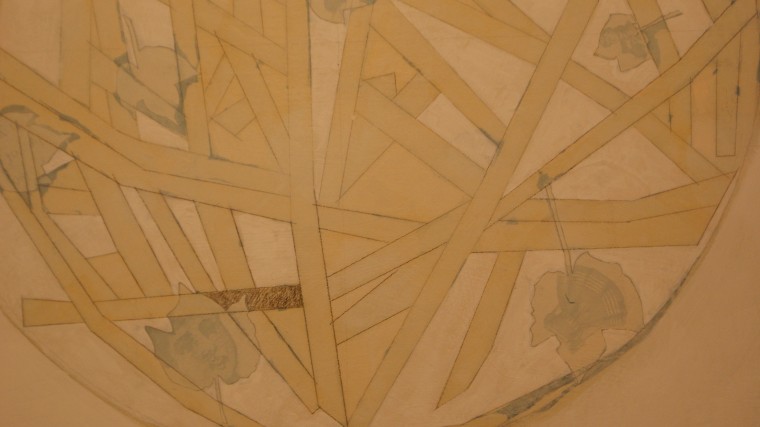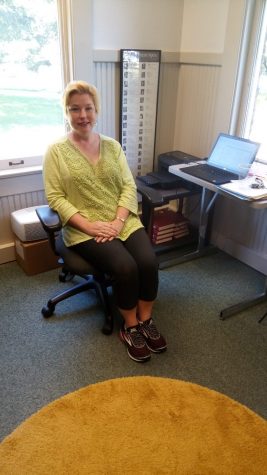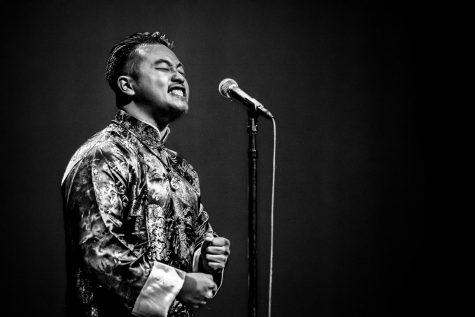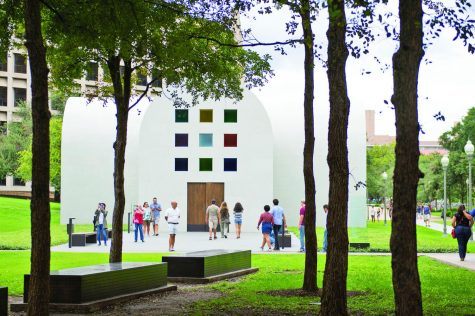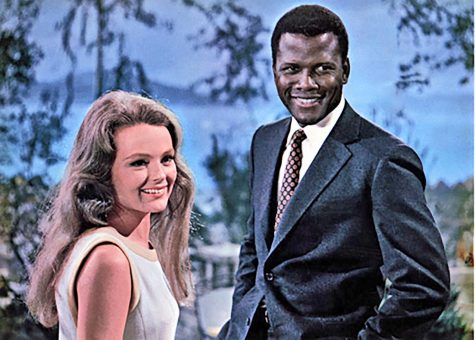Artist mixes media to give new voice to history
Artist Carol Flueckiger visited St. Edward’s University recently to speak about her exhibit, Solar Powered Paper Dolls.
For her work, Flueckiger used a 19th-century blueprinting technique called “cyanotype” to imprint vintage graphics, historic handwriting, modern clothing tags, and leaves onto a variety of surfaces, including four by four panels and thrift store clothing.
“My work is inspired by daily weather patterns, early American feminist history, and the text found on my clothing tags,” Flueckiger said.
Flueckiger used cyanotype to represent the mixture of early and modern America in her work.
“Generally, cyanotype is used on watercolor paper in sizes ranging from book page size to newspaper size,” Flueckiger said. “My work pushes the boundaries of this technique. Enlarging cyanotype and combining it with paint mediums updates this 19th-century photographic process and relates to my concept of mixing and matching images of the past with images of the present.”
Flueckiger was greatly inspired by the early American civil rights movement, specifically the fight for women’s suffrage and the abolition of slavery. Several of her pieces feature the handwriting of 19th-century civil rights leaders, including Elizabeth Cady Stanton, Frederick Douglass, Lucretia Mott, and the Grimke sisters.
“I used these documents as imagery in my work, inserting historic graphics and scribble quality handwriting into my paintings as a way of remembering and thinking about these figures,” Flueckiger said.
Much of her work features the handwriting of Elizabeth Cady Stanton.
“When I first saw [her] handwriting, I was struck by how expressive and unreadable it was. Most handwritten letters of the 19th century feature tight, neatly measured lines that seem to stay within an invisible grid. Stanton’s, by contrast, was loopy, artistic, unbound, and expressive,” Flueckiger said. “I incorporate these ideas directly into my work.”
Flueckiger had something else in common with Stanton, though, which has more to do with her technique than anything else.
“At the very end of her career, late in her life, Stanton tackled the controversial project The Women’s Bible,” she said. “This entailed cutting and pasting sections of the Bible into a blank book and then writing commentary in order to update the patriarchal interpretation. As an artist, Stanton’s technique of cutting and pasting to reinterpret history fascinates me as I mix and match historic imagery, letters, and images.”
Flueckiger also used selections from Lucretia Mott’s diary. Mott was an avid abolitionist who was sent to the World Antislavery Convention, only to be silenced because she was a woman. In Flueckiger’s work, Mott’s handwriting is an embodiment of the turmoil 19th-century America was facing as it wrestled with its conflicting ideals.
To bridge the gap between historical and modern, Flueckiger took several articles of thrift store clothing and printed the images of vintage paper dolls, historic handwriting, and modern laundry tags onto them. She then folded the clothing and put it into plastic sleeves in several ringed binders.
“Text on clothing tag labels collides with vintage paper doll figures, leaves, and the written words from letters discussing early American reform. They form a narrative of past, present, local, and global. [They] are suspended between the world of my laundry basket and early American feminist history as I slip, tie, zip, hook, snap, and pull history over my head, onto my hips, and around my bust,” Flueckiger said.
Previously, Flueckiger wore several of the shirts from her sketchbooks on which she blueprinted.
“One on top of the other,” she said. “This made me feel like a quasi-feminist paper doll.”
She mentioned the dedication to her work, saying “You know, honestly, don’t we go to lengths to make out work? And sometimes you just have to do odd things to think about how you’re going to compose, or how you’re going to make a painting.”
Much of Flueckiger’s work and inspiration came from things found in her laundry basket. A tag from her husband’s pants is combined with the historic words and images. Flueckiger expressed her amazement at this union between the present and the past. “‘Loose Straight.’ See, that’s poetry, and it just exists right there for us to look at.”


